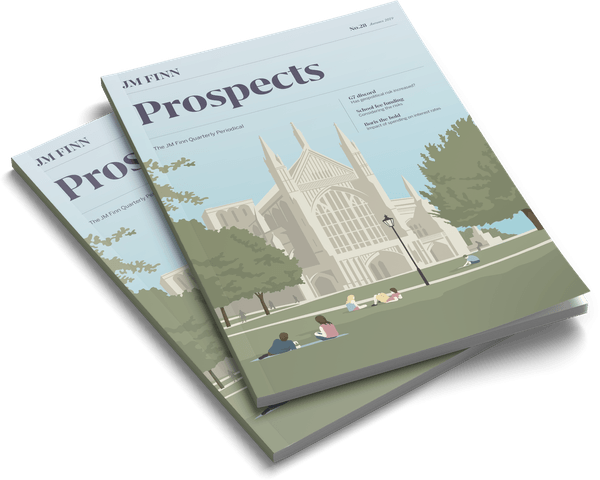In recent years, Nestlé has increasingly positioned itself as a ‘nutrition, health and wellness’ company. Its product segments are Beverages (24% of revenue), Nutrition & Health Science (18%), Milk Products & Ice Cream (14%), PetCare (14%), Prepared Dishes & Cooking aids (13%), Confectionary (9%) and Water (8%).
Until five years ago, Nestlé was delivering an organic revenue growth rate of +5-6%. But like the rest of the sector, growth started to slow from 2012 as price increases in emerging markets decelerated, which at one point drove half of the group’s revenue growth.
Changing trends in developed markets have also been a factor, with health conscious consumers preferring fresh foods and independent labels to unhealthy packaged foods from established brands.
These pressures, amongst others, culminated in organic revenue growth decelerating to +2.4% in 2017, the lowest in at least two decades.
In 2017 Ulf Mark Schneider became Nestlé’s first externally appointed CEO and has since set about initiating a number of wholesale changes to rejuvenate the business. 2018 results (02/19) indicate these changes are beginning to payoff, with organic revenue growth of +3%, its first acceleration since 2011.
Schneider has sought to focus on Nestlé’s businesses which have a dominant market share of growing endmarkets. By doing so, this has allowed Nestlé to grow at a rate c.1% above the industry average of its categories and generate the bulk of its revenues from products with market leading positions. These markets include coffee, Nestlé’s single biggest product category, which has a 25% global market share, and has been growing +4% p.a. Importantly for Nestlé, the majority of its product categories require considerable scale to operate in and have continued growth potential through a combination of geographic expansion and premiumisation opportunities.
Categories which have disappointed for Nestlé have included water and frozen foods. Water (i.e. San Pellegrino) has been a considerable drag on profitability due to cost inflation in PET (plastic) and more so in freight. In frozen foods, after a relaunch in the U.S. in 2015, Nestlé admitted it hadn’t kept up with innovation and marketing, this however has been a focus of 2019 and improvements have been seen. Aside from water, most of the product issues which Nestlé have faced are within management’s ability to rectify, but do take time to do so.
Along with increased focus on core businesses, Schneider has driven organic revenue growth through the swift disposal of underperforming/non-core businesses and the acquisition of faster/complementary ones. Notable divestures include that of the US confectionary business ($2.8B) and Gerber Life Insurance ($1.6B).
Diet-supplement maker Altrium ($2.3B) and Starbuck’s retail coffee product business ($7.2B), represent two large scale acquisitions that Schneider has made, both on reasonable valuations and are currently performing well.
Another challenge, not just for Nestlé, but for all food and beverage manufacturers, is whether the scale advantages of the past have diminished. In recent years, there have been a number of new independent brands which have been quick to tap into the emergence of trends such as plant-based protein, gluten-free and organic/natural. They have also been more adept in marketing and selling to millennial consumers through social media and e-commerce models. This has impacted Nestlé in a number of areas, particularly in the US with PetCare, where they were slow in premiumising and offering natural products.
Given the size of its global operations, these competitors have only resulted in minor market share losses for Nestlé. It is however clear, that the dynamics of the industry are shifting and with it the need to be more agile and innovative.
In this regard, Schneider has made substantial inroads since his appointment. He has implemented a cultural change of embracing greater risk tolerance with a “better to fail fast” and learn mentality. This has led to a substantial cut in lead times for innovation, down from an average of 24 months to 6-9 months. The number of innovations are also improving, with new launch statistics in food showing a 20% increase in 2018, with a 40% jump in product launches linked to key trends such as natural/organic, reduced fat/ sugar and environmentally friendly packaging. The picture is the same with beverages. This has allowed Nestlé to defend, and in some cases increase, its market share. Within the industry, Nestlé is regarded as the best at innovation.
Nestlé has also been increasing its consumer-facing marketing spend, such as social media. This jumped by 60% in 2017 (latest released figures), and was done without dramatically increasing marketing as a percentage of sales as agency fees were cut. Across all industries, Nestlé is within the top five global marketing spenders.
Although spending levels are not expected to rise above current levels, the cost of growth for Nestlé (and the industry) has increased over the last few years. Nestlé’s scale is still nonetheless crucial in its ability to consistently innovate and position its brands at the forefront of consumer minds.




